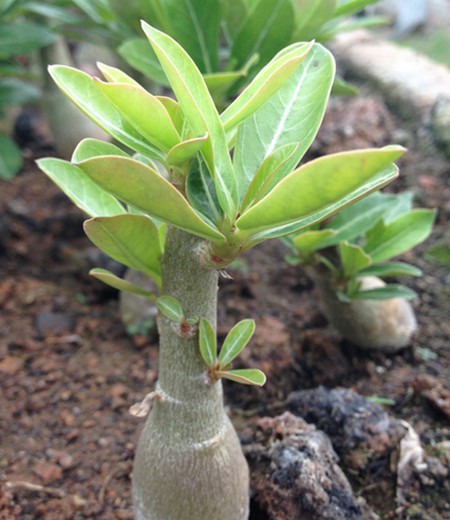Maintenance method of Zanthoxylum nitidum bonsai
Zanthoxylum nitidum toothpaste is all too familiar to the Chinese people. Its main pharmaceutical ingredient is extracted from the leaves of Zanthoxylum nitidum, which has the effect of clearing away heat and detoxification. In fact, Zanthoxylum nitidum is not only an important raw material for medicine, but also an ideal variety for making bonsai.

After the new pile is put on the basin, cover the pile body with a transparent plastic bag or film, leave an air vent of 3 cm to 5 cm, keep the basin soil moist and keep it in shade for maintenance. When most of the new buds grow to about 5 cm, the mask can be removed in cloudy and rainy days. After October, you can gradually turn to the sunny place for normal maintenance.
Because Zanthoxylum nitidum is a light-loving, warm and humid plant, the suitable temperature for the growth of Zanthoxylum nitidum bonsai is 30 ℃. In addition to timely watering to keep the basin soil moist, thin rotten cake fertilizer or diluted urea liquid fertilizer can be applied every 15 days or so. The alum fertilizer water made by mixed retting of ferrous sulfate and bean cake can be irrigated every ten days in northern saline-alkali areas to improve soil quality and prevent basin soil from alkalization. The cold resistance of Zanthoxylum nitidum is a little poor, so it should be moved into the indoor maintenance with sufficient light and temperature above 5 ℃ in winter in the north of the Yangtze River.
The common pest of Zanthoxylum nitidum is longicorn beetle eating and harming the stem and root, which can manually capture adults or remove eggs, or soak 80% dichlorvos solution with cotton to plug the wormhole, seal it with mud and poison the larvae.
A pot of carefully maintained bonsai stems are rugged, Qiu qu and colorful, flowers and leaves strange, dignified shape and color, extraordinary demeanor, in addition to showing the elegant charm of mountain and wild ancient trees, it also shows the unique beauty of vigor and simplicity, solemnity and elegance.
Time: 2019-06-02 Click:
- Prev

How to Care for Mosquito Mother Bonsai
Mosquitoes of many varieties, often used to make bonsai have myrica leaf Mosquitoes, thin leathery leaves, oblong or oblong lanceolate, sharp tip, the upper half of the edge has a few fine teeth; Chinese Mosquitoes, leaves thicker, elliptic or obovate, 3 cm to 7 cm long, 1.5 cm to 3 cm wide
- Next

Culture methods and matters needing attention of oleander bonsai
Oleander, false bamboo peach also, its leaves like bamboo, its flowers like peach, it is neither bamboo nor peach, hence the name, some people call me willow leaf peach. It likes light, warmth, drought tolerance, planted in the open air, almost without too much management, can grow very well. Once he has survived, he will take the initiative to assume the responsibility of the environmental protection guard around him.
Related
- Fuxing push coffee new agricultural production and marketing class: lack of small-scale processing plants
- Jujube rice field leisure farm deep ploughing Yilan for five years to create a space for organic food and play
- Nongyu Farm-A trial of organic papaya for brave women with advanced technology
- Four points for attention in the prevention and control of diseases and insect pests of edible fungi
- How to add nutrient solution to Edible Fungi
- Is there any good way to control edible fungus mites?
- Open Inoculation Technology of Edible Fungi
- Is there any clever way to use fertilizer for edible fungus in winter?
- What agents are used to kill the pathogens of edible fungi in the mushroom shed?
- Rapid drying of Edible Fungi

